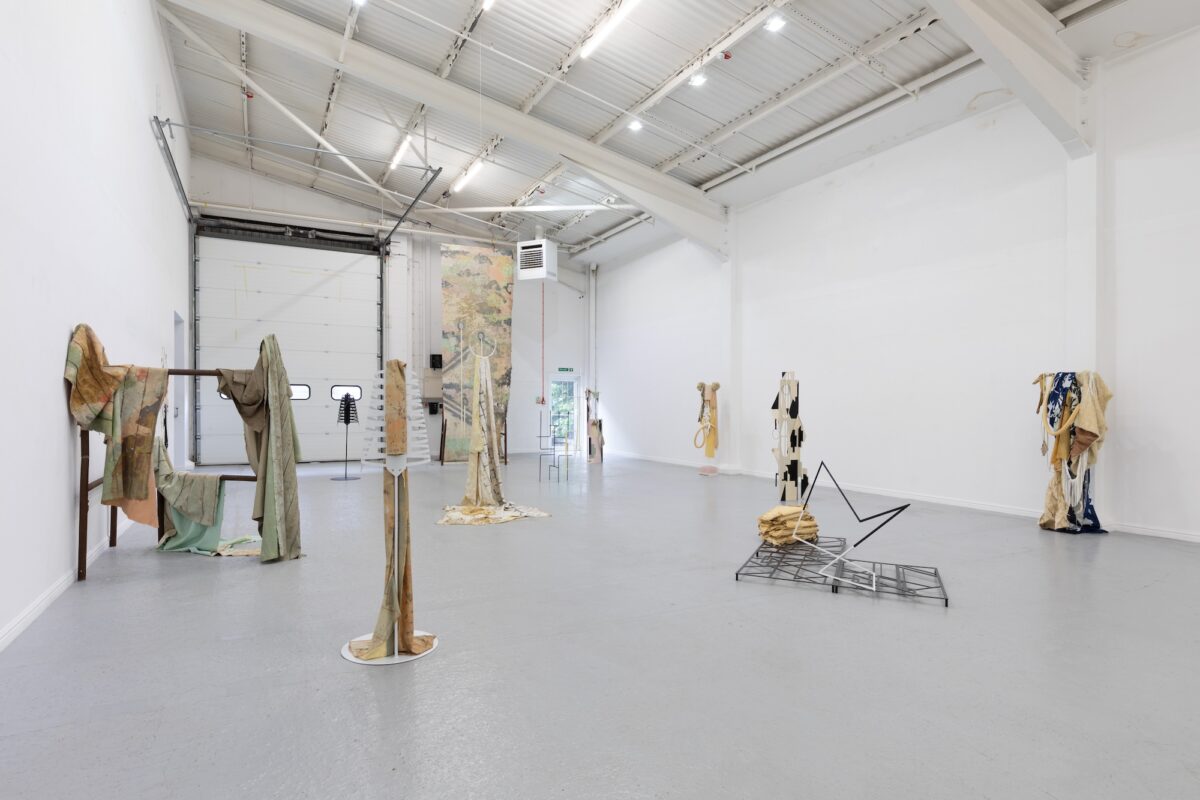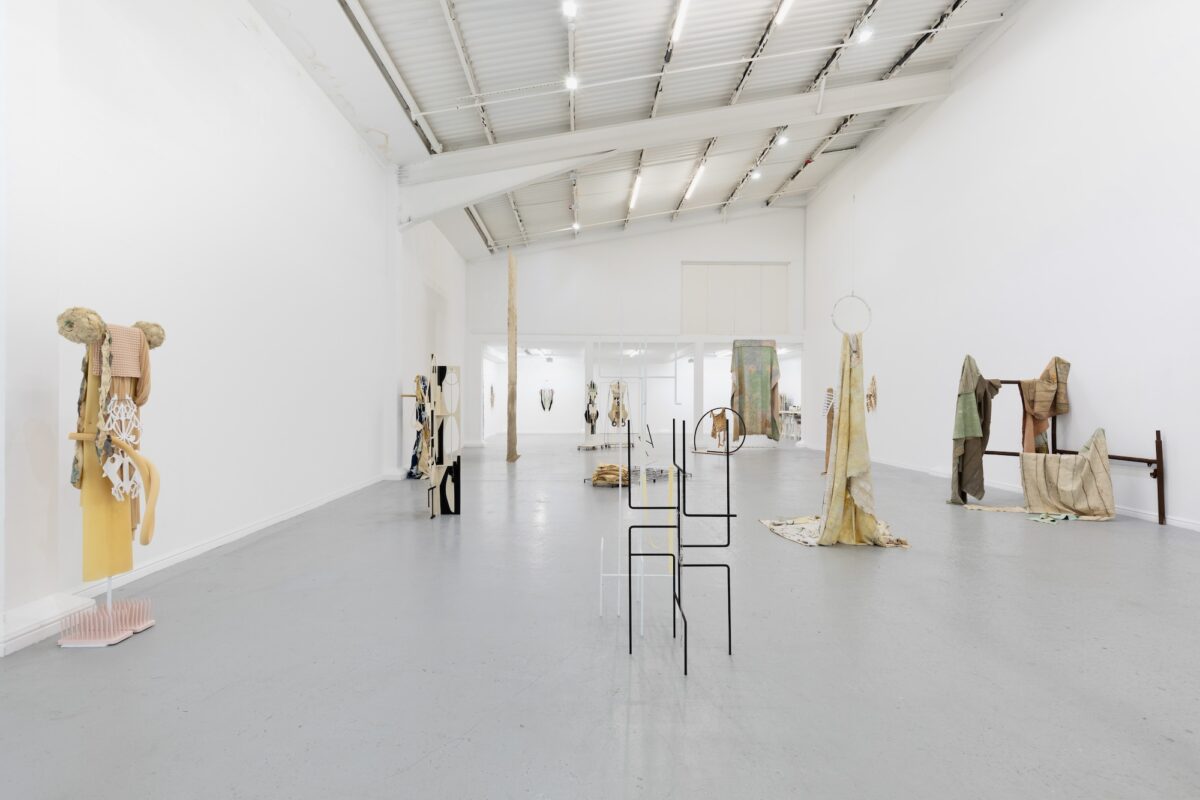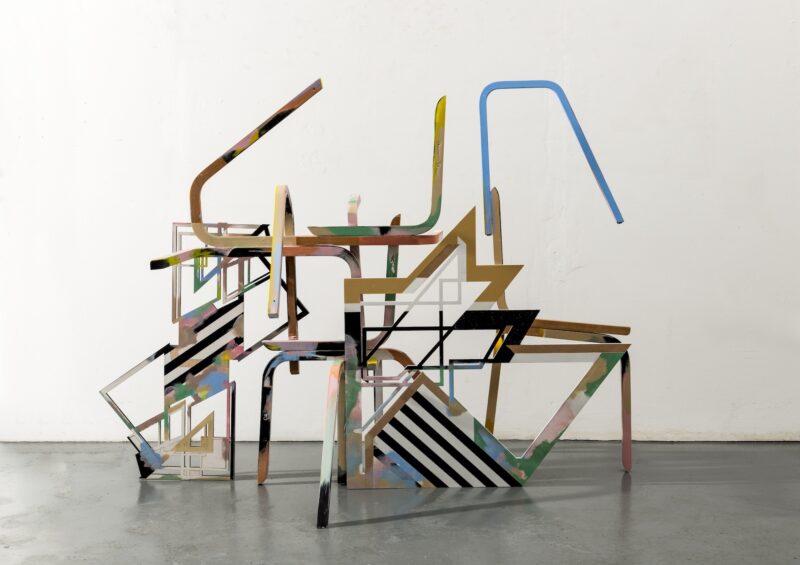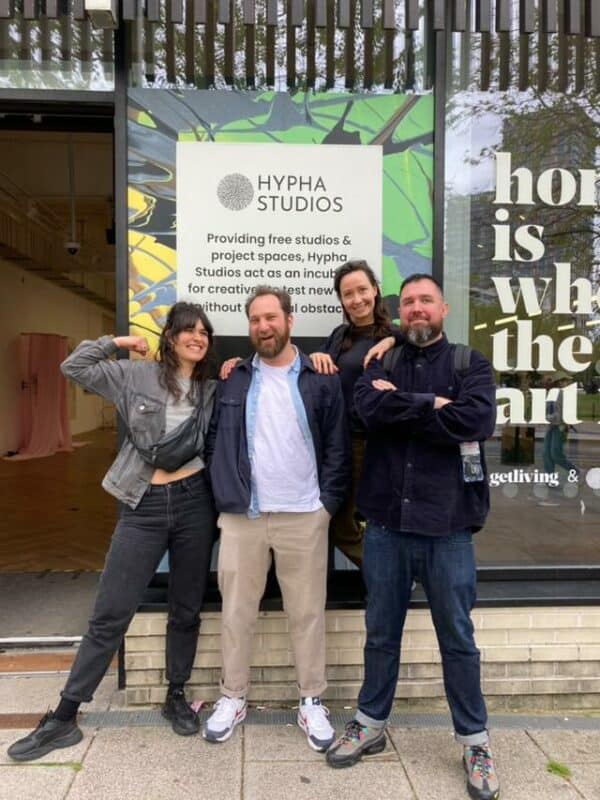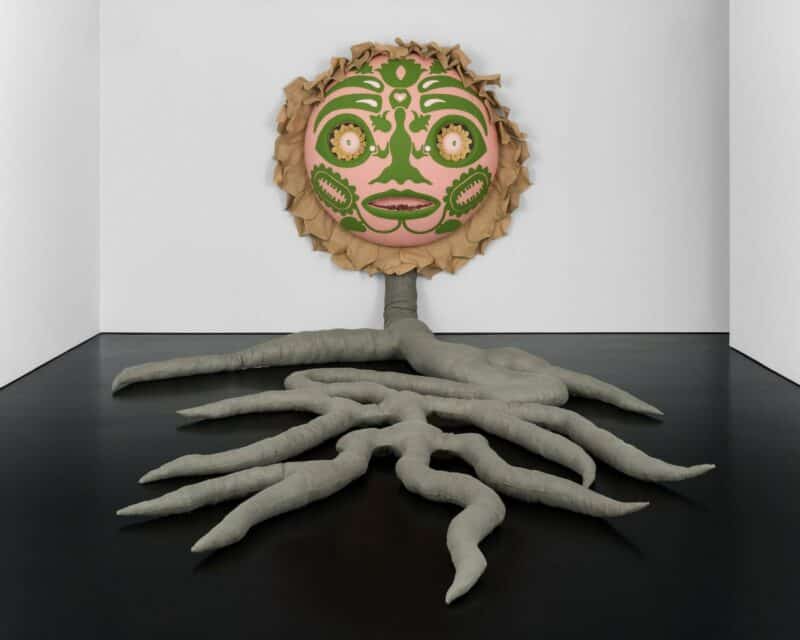Andrea V. Wright sat down with Thorp Stavri to talk about her solo exhibition Eyes of Skin which is on at Thames Side Studios Gallery until June 2nd.
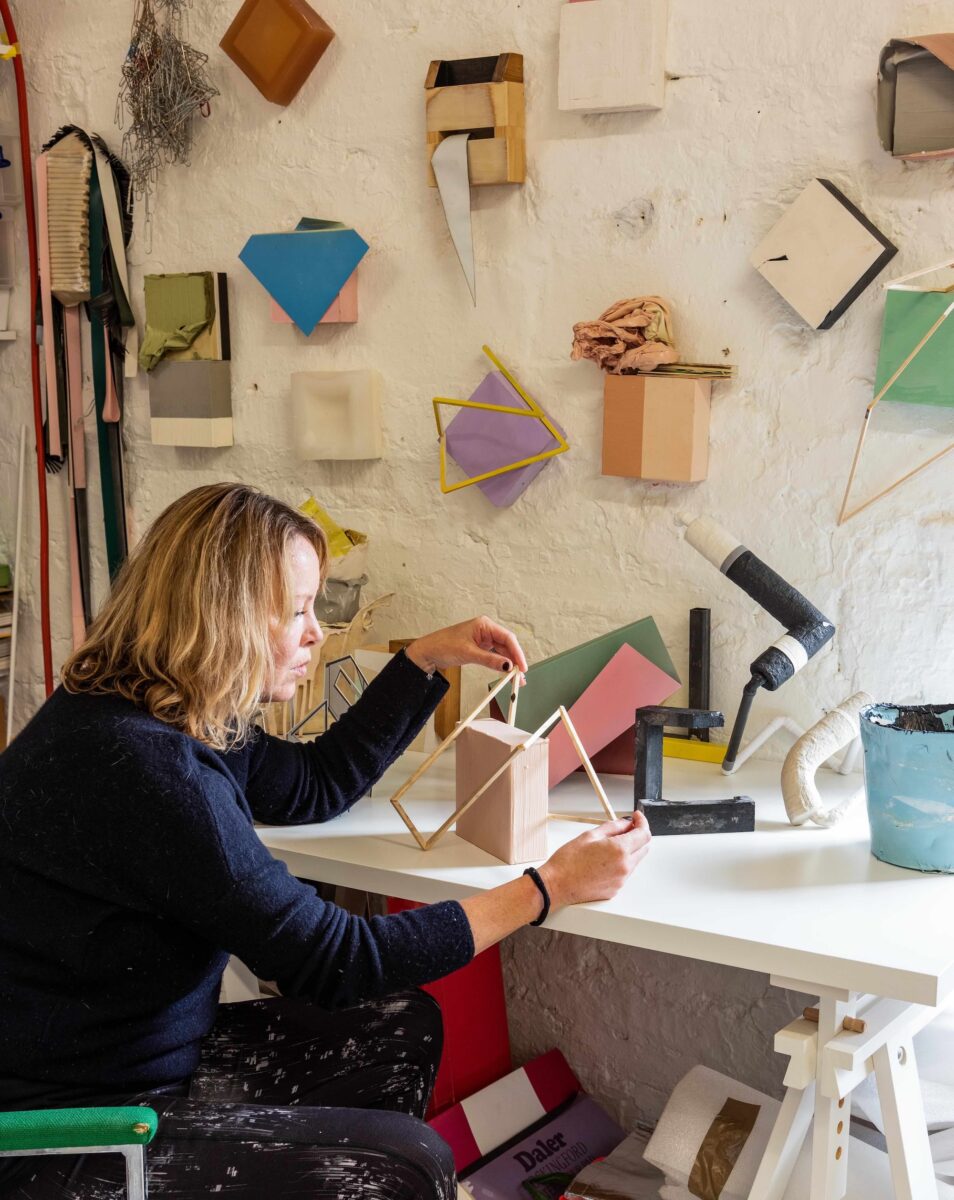
When we first saw your work, it was your exploration of skin as both architecture and clothing that really caught our eye. Could you elaborate on how the idea of skin serves as a conduit for understanding our environment beyond visual perception?
When you first got in touch with me back in 2019 I was experimenting with lifting latex imprints from the floor of my studio. A panel of the 8 x 4 hardwood covering of floor had been damaged due to a leak and when I removed the panel I found untouched pine floorboards underneath that I just had to take a print from. And when we discussed your plans for the show ‘Index’ I thought these floor casts would be perfect for the show.
When I talk of skin in my work I’m not really talking about it in a literal sense – I’m speaking about other invisible kinds of skin: memory, residues, veneers and sublayers, and although these can manifest in our clothing and the architecture that surrounds our everyday lives, we also “clothe” ourselves in emotional layers built up from these sensory memories.
Visual perception can only tell us so much about our environment and it can often be unreliable. It is the other senses, touch and sound but also those intangible “senses” we all have, that are our original language of perception and that shape our characters throughout our lives. Our skin, through the perception of touch, is undeniably our first contact with the physical world. And our emotional “skin” is undeniably how we learn to navigate our environment.
So just as those floorboards were a hidden part of the physical architecture of my studio, they also represent an underlying, untouched substrate ingrained in the grime of sensory matter built up over years, that curiosity leads me to explore forensically.
How do you approach incorporating tactile engagement and other sensory elements into your exhibitions?
With “Eyes of Skin” I am presenting works that are more about touch and imagination than being ‘multisensory’. I am focusing on employing texture, traces, abstractions and the layering of materiality to suggest fragmented forms that lie on the peripheries of our “ocular-dependent” understanding.
All of these pieces in some way come back to that abstraction, layering and revealing of traces.
You have siloed off an area within the exhibition that will be utilised as a residency space for the duration of the show, allowing for spontaneous interventions and real-time evolution. Can you share more about your creative process during this residency period and how it will influence the overall narrative of the exhibition?
I’m really looking forward to the residency aspect of the show. I see it as a chance to alter the spatial arrangements of the objects on display and to intervene in some way. It might take form in drawings, photography, adjustments and spontaneous temporal sculptures made onsite. I don’t want to be precious about how the show looks – I want to play with and alter the elements that inhabit it. I’m talking about subtle shifts to suggest the impermanence of it all.
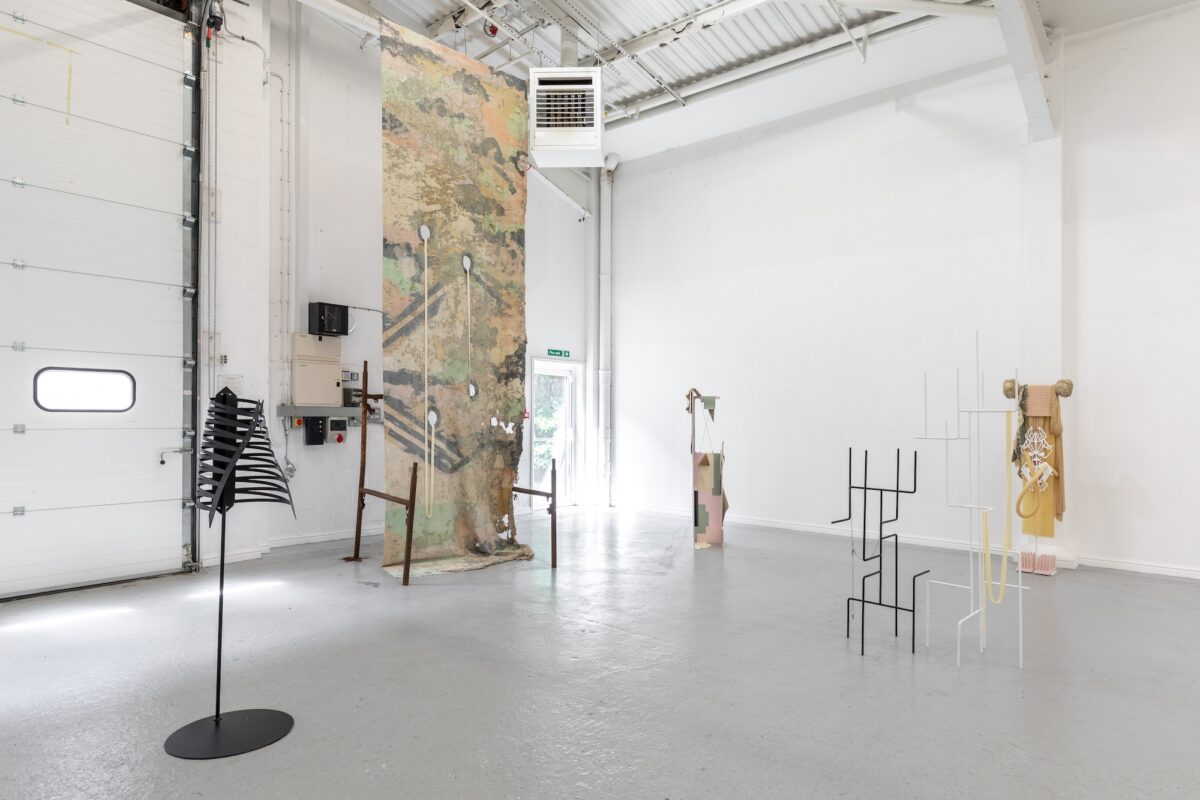
The exhibition is described as blurring the lines between reality and illusion. How do you navigate this intersection in your artistic practice, and what significance does it hold for you personally?
I guess all exhibitions blur the lines of reality and illusion to a lesser or greater extent. Much of what is marketed to us as material consumers is based on illusion. Illusions of security, cleanliness, permanence and durability.
My practice in part seeks to reveal the desire to balance all aspects of ourselves, to achieve a semblance of protection in the sharper edges of oneself and to reconcile one’s personal and public identities. The reveal and conceal. One seeks to walk out leaving traces in the sand only to meticulously retrace our steps, smudging out our tracks along the way like we were never there. I hope that makes sense to people who come to the exhibition.
“Eyes of Skin” invites viewers on a journey of self-discovery and creative exploration. How do you hope visitors will engage with the exhibition, and what do you ultimately want them to take away from the experience?
I hope visitors will engage with the materials that make up the work. For example, with my latex imprints of architectural surfaces, I like to imagine visitors questioning whether architecture holds memory and if so what does that look like. With my soft sculptural objects and substrates I want to raise questions in people’s imagination around subjects of the vulnerability of our bodies and our psyche – the thickness of ‘skin’ and just how thick does it have to be to cope with an ever-increasing hostile environment.
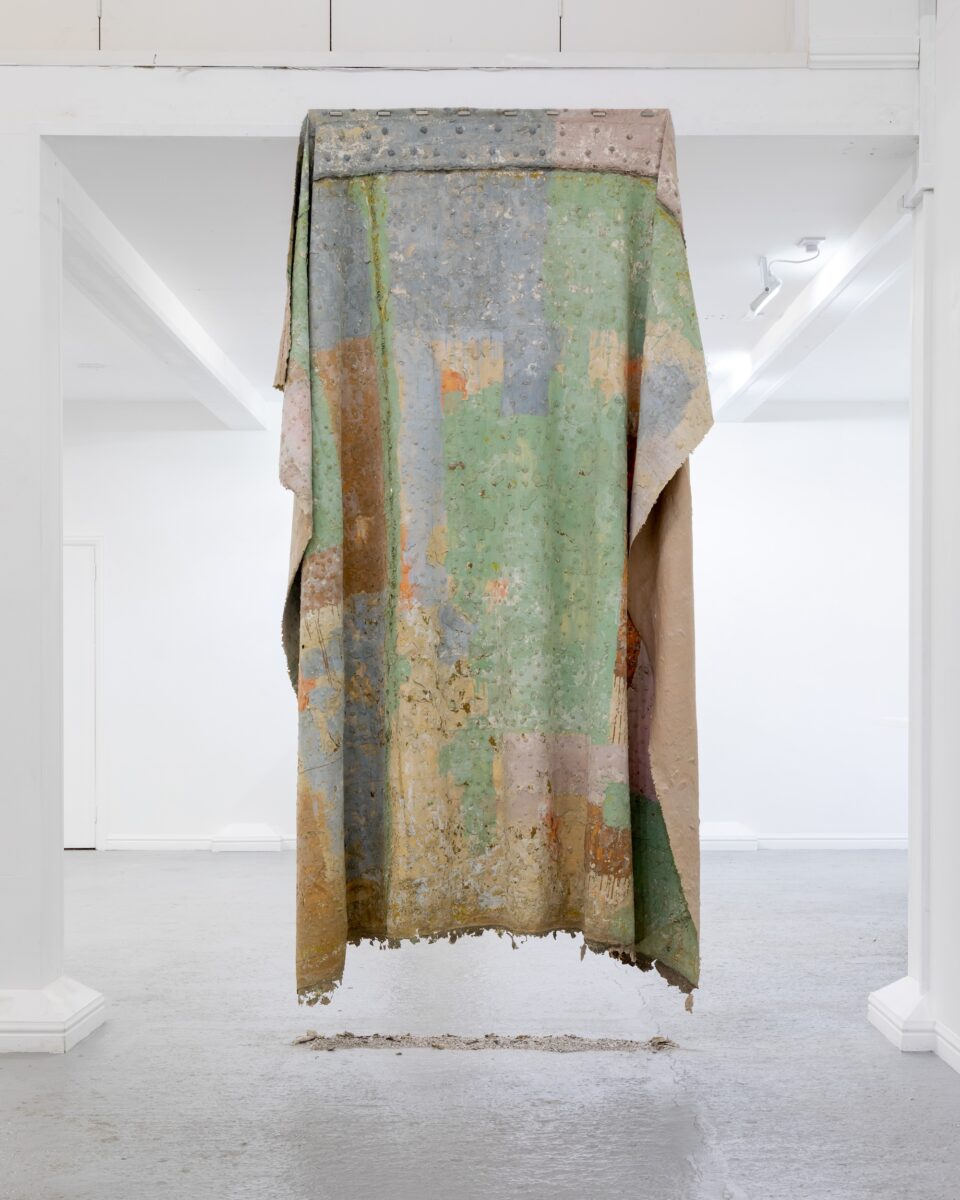
All install photographs © BJDeakinPhotography
Andrea V. Wright, Eyes of Skin, 18th May – 2nd June 2024, Thames-Side Studios Gallery
12:00 – 17:00, Thursday to Sunday, Curated by Eric Thorp and Nicholas Stavri (@thorpstavri)
Kindly supported by Thames-side Studios (@thamessidestudiosse18) and FAD Magazine (@worldoffad)
Breakfast reception and Tour: As part of the Eyes of Skin programming, Andrea V. wright and Curators Eric Thorp and Nicholas Stavri will be hosting a breakfast reception and tour of the exhibition. They will discuss the exhibition, Andrea’s processes, thoughts, material and its meaning. Breakfast reception and tours with @andreavwright and @thorpstavri – Sunday 2nd June 10:30-1200
About the artist
Andrea V. Wright is a multidisciplinary visual artist based in Somerset, UK. She graduated from Chelsea College of Art & Design before establishing a career in fashion, styling, and music, and completing an MFA at Bath School of Art & Design. Wright has been selected for the Jerwood Drawing Prize 2017, the Royal Society of Sculptors Bursary Award 2017/18, and the Ingram Collection Purchase Prize 2019.
In 2021 Wright was awarded an AN Bursary for the PADA residency in Lisbon, Portugal, culminating in a solo exhibition at the Foundry Gallery, London. Wright is currently a mentor for the MASS Sculpture School.
